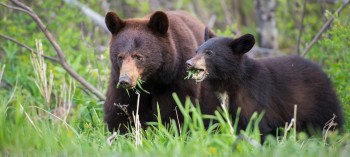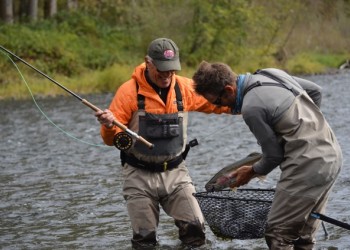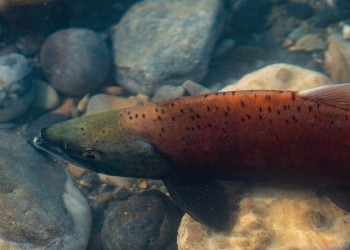Safety and Outdoor Ethics
As a visitor to the National Forests, there are numerous ways be a good steward and to protect the forests and the natural environment, to ensure the health and safety of visitors, and to promote pleasant and rewarding outdoor recreation experiences for all visitors.
Be a Great Steward for Your National Forests!

Black bears can be found across the Rogue River-Siskiyou National Forest. Visitors should always practice safe food storage and bear aware practices when visiting the national forest.
(Adobe Stock Image by Jillian)It is important for all visitors to the Rogue River-Siskiyou National Forest to keep clean campsites and safely and securely store all bear attractants at all times.
Bears enjoy an easily obtained meal, and their keen sense of smell will lead them to any food in your campsite. Much of the Rogue River-Siskiyou National Forest has a high population of black bears, and providing easy access to human food and other bear attractants quickly creates problems for bears and visitors alike.
Keep a clean camp by following these guidelines:
- If electrified fenced areas, bear boxes, or food hoists are provided, use them to store coolers and food storage containers. If doing an overnight stay on a river, do not store these items on boats.
- Pick up food scraps and store garbage overnight in a bear-resistant dry box, canister, or cooler or hang items at least 12 feet off the ground between two trees and six feet from tree trunks.
- Clean your kitchen and dining area after every meal. Remove food smells from tables, utensils, and coolers with alcohol or ammonia.
- If you're using an electrified fence to secure your items, strap coolers and dry boxes together and stack empty pans or cans on top to be alerted if a bear tries to raid your food.
Remember: Black bears are wild animals that can behave unpredictably if habituated to human food and can quickly become a human safety problem. A fed bear is a dead bear.
What if you come across a bear while recreating on the Rogue River-Siskiyou National Forest?
- When hiking in bear country, make noise, keep children close and carry pepper spray.
- If you encounter a bear, keep your distance. If you see bear cubs, leave the area.
- Stay calm, face the bear, and slowly back away. Avoid eye contact.
- Don’t run.
- Give the bear space and a way to escape.
- In the unlikely event you are attacked, fight back, shout, be aggressive, and use rocks, sticks and hands.
The 7 Principles of Leave No Trace provide an easily understood framework of minimum impact practices for anyone visiting the outdoors. The Principles can be applied anywhere — from remote wilderness areas, to local parks and even in your backyard. Each Principle covers a specific topic and provides detailed information to empower you to minimize your impacts. The 7 Principles are well-established and widely known but not static. Leave No Trace continually examines, evaluates, and reshapes the Principles and conducts research to ensure that they are up to date with the latest insights from biologists, land managers, and other leaders in outdoor education.
Tread Lightly! is a non-profit organization that leads a national initiative to promote the responsible use of motorized vehicles when recreating outdoors. Their goal is to balance the off-road and off-highway vehicle (OHV) users’ need for adventure with the need to conserve the places where they ride and explore.
Ethical Hunting & Fishing Practices
Ethical hunting and fishing practices promote sustainability and work to preserve wildlife for future generations.
Green Dot Cooperative Travel Management Areas

The objectives of the Green Dot restrictions are to:
- Promote quality hunting;
- Minimize harassment of wildlife;
- Maintain adequate bull elk escapement; and
- Protect soils and wildlife habitat.
Catch-and-release: Reducing fish mortality

In some Oregon state waters, catch and release fishing is required in order to protect valuable fish resources. In most waters, however, release or harvest is a personal choice.
Keep Fish Wet

Not only does using best practices increase survival rates of fish, but it also helps fish return to their normal behavior as quickly as possible after release.



